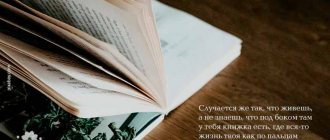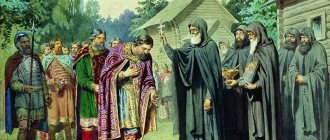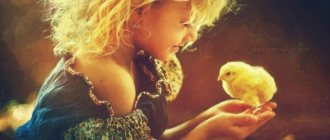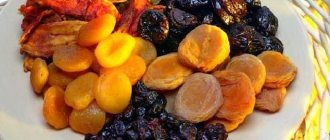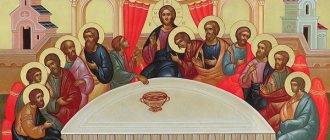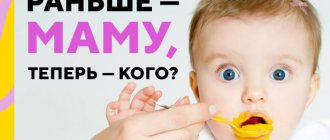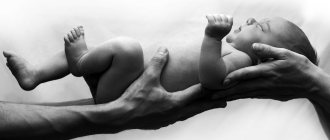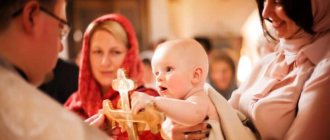| Hans Christian Andersen | |
| Hans Christian Andersen | |
| Birth name | Hans Christian Andersen |
| Date of Birth | 2.04.1805 |
| Place of Birth | Odense, Danish-Norwegian Union |
| Date of death | 4.08.1875 |
| A place of death | Copenhagen, Denmark |
| Citizenship | Denmark |
| Occupation | writer |
| Language of works | Danish |
| Autograph | |
Hans Christian Andersen
(Hans Christian Andersen; Danish: Hans Christian Andersen) is a Danish writer, known primarily for his magical and everyday fairy tales.
H.K. Andersen / Biography
Hans Christian Andersen was born into the family of a shoemaker (who died in 1816) and a washerwoman. Even in early childhood he showed literary abilities, but due to lack of money he could not study. At the age of 14 he went to Copenhagen, where he became an actor at the Royal Theater. In 1822, with the help of patrons, he entered school in Slagels, then, at the expense of the treasury, he studied at the gymnasium in Elsinore, which he graduated in 1827. Soon he devoted himself entirely to literary work. His private life was uneventful: he was never married, had no children, did not experience whirlwind romances (although several of his romantic loves are known), and traveled little, although he visited France and Italy.
He made his debut with the fantastic story “A Journey on Foot from the Holmen Canal to the Eastern End of Amager” (1829), which attracted the attention of critics. In the same year, the play “Love on the Tower of St. Nicholas." The novel “The Improviser” (1835), translated into many languages, was a great success. This is a characteristic work of European late romanticism, dedicated to the fate of the artist, “the chosen one of the gods.” Having survived the misunderstanding of the crowd and traveled through Italy, the hero, however, finds happiness and recognition in the finale. On the contrary, the hero of the novel “Only a Violinist” (1837), a talented musician, and his Jewish girlfriend Naomi suffer defeat in life. The exceptional personality of the artist is also the theme of the last of Andersen’s novels, “Lucky Per” (1870). Novels "O.T." (1836), “Two Baronesses” (1847), “To be or not to be” (1857) are dedicated to the destinies of people from the lower social classes. They combine an intense plot with sentimentality, didactics and lengthy descriptions of nature and morals.
Andersen continued to work as a playwright, writing the farce comedy The Invisible Man in Sprog (1839), the romantic dramas Mulatto (1840) and The Mauritanian Woman (1841). All these plays were staged at the Royal Theater and the Casino Theatre. The comedy “Firstborn” (1845) had the greatest success. Subsequently, Andersen wrote fairy-tale plays - adaptations and dramatizations of his own fairy tales.
Andersen's earliest known fairy tale, "The Tallow Candle", was written back in the 1820s. The heroine of the fairy tale, a candle, the daughter of a sheep and a pot, suffered from loneliness until a flint lit a fire in her. Fame came to Andersen the storyteller after the publication of the book “Fairy Tales Told for Children” (Eventyr, fortalte for Børn, 1835). It includes fairy tales that have become classics - “Flint”, “Little Claus and Big Claus”, “The Princess and the Pea”, “Little Ida’s Flowers”, “Thumbelina”, “Bad Boy”, “Dear Comrade”. Further editions of Tales Told for Children appeared in 1836 and 1837. Since 1843, Andersen has called his regularly published collections (until 1872) “New Fairy Tales.”
- H.K. Andersen
- Andersen. Portrait by K.A. Jensen, 1836
- Andersen, 1840-50
- Caricature of Andersen in the Danish magazine Le Corsair after his trip to England and Scotland in 1847
- Andersen at the Collin house, March 15, 1862
- Anderson with the Friys family at the Frijsenborg estate, 1863
If Andersen followed in the footsteps of his predecessors in his novels and plays, he radically reformed the fairy tale genre. Based on folklore or book plot schemes, he creates a separate algorithm for each fairy tale. At the center of almost every fairy tale is a certain metaphor. For example, “The Ugly Duckling” (1843) refers to a motif characteristic of Andersen’s novels - the fate of an eccentric from the lower classes who managed to reverse his fate and enter the world of art. The plot of The Snow Queen (1844) is not entirely clear outside the context of debates between classicism, romanticism and realism, and The Shadow (1847) contains a clear nod to Adelbert von Chamisso's Peter Schlemihl.
Many of the characters have real prototypes: in the Snow Queen one can guess Yeni Lind, one of the writer’s lovers, and in Thumbelina they see the features of his friend, the dwarf Heddy Gadler. Sometimes the same motif is played out several times - just compare the fairy tales “The Steadfast Tin Soldier” (1838) and “The Old House” (1847). One of the constant techniques is the “humanization” of everyday things or toys, which acquire their own, but tragically inferior existence. Romantic irony also occupies a large place in Andersen’s palette of techniques: such tales as “The King’s New Clothes” (1837) or “The Swineherd” (1841) have become classic examples of it.
Andersen's complex allegories, like his pessimistic philosophy, were that “layer” of fairy tales that was intended primarily for adult readers. Andersen himself noted that children “grasp only the secondary” in his fairy tales. However, he received recognition largely as a children's writer.
This recognition came in different forms: in Andersen’s hometown, illumination was arranged in his honor in 1870, and just ten years after his death, a monument to him was erected.
Numerous translations became another sign of recognition. Andersen's fairy tales began to be translated into Russian during his lifetime. Classic translations into Russian were carried out by A. V. and P. G. Hansen in 1894–1908.
The influence of Andersen's fairy tales on Russian literature of the 20th century - both for children and for “adults” (plays by E. Schwartz, many motifs in the poetry of A. Akhmatova and N. Gumilev) - is more than obvious.
H.K. Andersen
Hans Christian AndersenHans Christian Andersen
Bibliography
Famous fairy tales
Storks (Storkene, 1839) Godfather's Album (Gudfaders Billedbog, 1868) Angel (Engelen, 1843) Anne Lisbeth (Anne Lisbeth, 1859) Grandmother (Bedstemoder, 1845) The Flea and the Professor (Loppen og Professoren, 1872) Will-o'-the-wisps in the city (Lygtemændene) ere i Byen, sagde Mosekonen, 1865) God will never die (Den gamle Gud lever endnu, 1836) Great sea serpent (Den store Søslange, 1871) Bronze boar (truth) (Metalsvinet, 1842) Elderberry mother (Hyldemoer, 1844) Bottled neck (Flaskehalsen, 1857) On the day of death (Paa den yderste Dag, 1852) In the nursery (I Børnestuen, 1865) Cheerful disposition (Et godt Humeur, 1852) The wind talks about Valdemar Dae and his daughters (Vinden fortæller om Valdemar Daae og hans Døttre, 1859) Windmill (Veirmøllen, 1865) Magic Hill (Elverhøi, 1845) Collar (Flipperne, 1847) Everyone know your place! (Everything has its place) (“Alt paa sin rette Plads”, 1852) Van and Glan (Vænø og Glænø, 1867) The Ugly Duckling (Den grimme Ælling, 1843) Hans the Churban (Fool Hans, Ivanushka the Fool) (Klods-Hans, 1855) Two Brothers (To Brødre, 1859) Two Maidens (To Jomfruer, 1853) Twelve Passengers (Tolv med Posten, 1861) The Cock and the Weathervane (Gaardhanen og Veirhanen, 1859) The Ice Maiden (Iisjomfruen, 1861) The Little Match Girl (Den lille Pige med Svovlstikkerne, 1845) The Girl Who Stepped on Bread (The Girl Who Stepped on Bread) (Pigen, som traadte paa Brødet, 1859) Moving Day (Flyttedagen, 1860) Wild Swans (De vilde Svaner, 1838) Director of the Puppet Theater ( Marionetspilleren, 1851) Days of the week (Ugedagene, 1868) The Brownie and the Mistress (Nissen og Madamen, 1867) The Small Trader's Brownie (The Shopkeeper's Brownie) (Nissen hos Spekhøkeren, 1852) The Road Companion (Reisekammeraten, 1835) The Marsh King's Daughter (Dynd-Kongens Datter , 1858) Dryad (Dryaden, 1868) Thumbelina (Tommelise, 1835) (see also Thumbelina (character)) Jewess (Jødepigen, 1855) Spruce (Grantræet, 1844) Bishop of Berglum and his relatives (Bispen paa Børglum og hans Frænde, 1861 ) There is a difference! (“Der er Forskjel!”, 1851) The Toad (Skrubtudsen, 1866) The Bride and Groom (Kjærestefolkene or Toppen og Bolden, 1843) The Green Crumbs (De smaa Grønne, 1867) The Evil Prince. Legend (Den onde Fyrste, 1840) The Golden Boy (Guldskat, 1865) And sometimes happiness hides in a pinch (Lykken kan ligge i en Pind, 1869) Ib and Christine (Ib og lille Christine, 1855) From the almshouse window (Fra et Vindue i Vartou, 1846) The True Truth (Det er ganske vist!, 1852) The History of the Year (Aarets Historie, 1852) The Story of a Mother (Historien om en Moder, 1847) How the Storm Outweighed the Signs (Stormen flytter Skilt, 1865) How good! (“Deilig!”, 1859) Galoshes of Happiness (Lykkens Kalosker, 1838) Drop of Water (Vanddraaben, 1847) Key to the Gate (Portnøglen, 1872) Something (“Noget”, 1858) Bell (Klokken, 1845) Bell Pool (Klokkedybet, 1856) The Bell Watchman Ole (Taarnvægteren Ole, 1859) The Comet (Kometen, 1869) The Red Shoes (De røde Skoe, 1845) Who is the happiest? (Hvem var den Lykkeligste?, 1868) Swan's Nest (Svanereden, 1852) Linen (Hørren, 1848) Little Claus and Big Claus (Lille Claus og store Claus, 1835) Little Tuk (Lille Tuk, 1847) Moth (Sommerfuglen, 1860) Muse of the New Age (Det nye Aarhundredes Musa, 1861) On the Dunes (En Historie fra Kliterne, 1859) At the Edge of the Sea (Ved det yderste Hav, 1854) At the Child's Grave (Barnet i Graven, 1859) In the Poultry Yard (I Andegaarden, 1861 ) The Dung Beetle (Skarnbassen, 1861) The Silent Book (Den stumme Bog, 1851) The Bad Boy (Den uartige Dreng, 1835) The King's New Clothes (Keiserens nye Klæder, 1837) The Old Bachelor's Nightcap (Pebersvendens Nathue, 1858) What the Old Woman Told About Johanna (Hvad gamle Johanne fortalte, 1872) A fragment of a string of pearls (Et stykke Perlesnor, 1856) Flint (Fyrtøiet, 1835) Ole Lukøie (Ole Lukøie, 1841) Scion of the plant of paradise (Et Blad fra Himlen, 1853) A couple (Kærestefolkene, 1843 ) Shepherdess and Chimney Sweep (Hyrdinden og Skorsteensfeieren, 1845) Peiter, Peter og Peer (1868) Pen and Inkwell (Pen og Blækhuus, 1859) Dance, doll, dance! (Dandse, dandse Dukke min!, 1871) Twin Cities (Venskabs-Pagten, 1842) Under the Willow (Under Piletræet, 1852) Snowdrop (Sommergjækken, 1862) The Last Dream of the Old Oak (Det gamle Egetræes sidste Drøm, 1858) The Last Pearl (Den sidste Perle, 1853) Great-Grandfather (Oldefa'er, 1870) Ancestors of the bird-keeper Greta (Hønse-Grethes Familie, 1869) The most beautiful rose of the world (Verdens deiligste Rose, 1851) The Princess and the Pea (Prindsessen paa Ærten, 1835) Lost (“Hun duede ikke” , 1852) Jumpers (Springfyrene, 1845) Psychen (Psychen, 1861) Folksong Bird (Folkesangens Fugl, 1864) Phoenix Bird (Fugl Phønix, 1850) Five from One Pod (Fem fra en Ærtebælg, 1852) Garden of Eden (Paradises Have, 1839) Stories of a Sunbeam (Solskins-Historier, 1869) Childish Chat (Børnesnak, 1859) Rose from Homer's Tomb (En Rose fra Homers Grav, 1842) Chamomile (Gaaseurten, 1838) The Little Mermaid (Den lille Havfrue, 1837) From the Ramparts ( Et Billede fra Castelsvolden, 1846) The Gardener and the Gentlemen (Gartneren og Herskabet, 1872) Tallow Candle (Tællelyset, 1820s) The Most Incredible (Det Utroligste, 1870) Candles (Lysene, 1870) The Swineherd (Svinedrengen, 1841) Pig- piggy bank (Pengegrisen, 1854) Heartbreak (Hjertesorg, 1852) Silver coin (Sølvskillingen, 1861) Seat (Krøblingen, 1872) Speeders (Hurtigløberne, 1858) Snowman (Sneemanden, 1861) Snow queen (Sneedronningen, 1 844) Hidden - not forgotten ( Gjemt er ikke glemt, 1866) Nightingale (Nattergalen, 1843) Dream (En Historie, 1851) Neighbors (Nabofamilierne, 1847) Old gravestone (Den gamle Gravsteen, 1852) Old house (Det gamle Huus, 1847) Old street lamp (Den gamle Gadeløgte, 1847) The Old Church Bell (Den gamle Kirkeklokke, 1861) The Steadfast Tin Soldier (Den standhaftige Tinsoldat, 1838) The Fate of the Burdock (Hvad Tidselen oplevede, 1869) The Flying Chest (Den flyvende Kuffert, 1839) Sausage Stick Soup (Suppe paa en Pølsepind, 1858) The Happy Family (Den lykkelige Familie, 1847) The Gatekeeper's Son (Portnerens Søn, 1866) The Talisman (Talismanen, 1836) The Shadow (Skyggen, 1847) The Thorny Path of Glory (Ærens Tornevei, 1855) Auntie (Moster, 1866) Aunt Toothache (Tante Tandpine, 1872) Rag (Laserne, 1868) Whatever hubby does is fine (Whatever hubby does is fine) (Hvad Fatter gjør, det er altid det Rigtige, 1861) Snail and Roses (Snail and Rosebush) (Sneglen og Rosenhækken, 1861) The Philosopher's Stone (De Vises Steen, 1858) Holger Danske (Holger Danske, 1845) Little Ida's Flowers (Den lille Idas Blomster, 1835) Teapot (Theepotten, 1863) What not will come up with... (What can you come up with) (Hvad man kan hitte paa, 1869) After a thousand years (Om Aartusinder, 1852) What the whole family said (Hvad hele Familien sagde, 1870) Darning needle (Stoppenaalen, 1845) Buckwheat (Boghveden, 1841) Rosebush Elf (Rosen-Alfen, 1839)
Stories and novels
The Improviser (Improvisatoren, 1835) Just a Violinist (Kun en Spillemand, 1837) Invisible Pictures (a collection of 33 short stories) Petka the Lucky Man (Lykke-Peer, 1870)
Film adaptations
1941 - The Swineherd in the collection Colored Film Novels 1966 - The Snow Queen 1968 - An Old, Old Tale 1969 - The Tale of a Fairy Tale 1976 - The Princess and the Pea 1976 - The Little Mermaid 1979 - The Nightingale 1984 - The Fairies' Autumn Gift 1986 - The Secret of the Snow Queen 1987 - Wild Swans and 1994 - Tin soldier 1994 - The Snow Queen 2002 - The Snow Queen
Animation
1956 - The Ugly Duckling 1957 - The Snow Queen 1962 - Wild Swans 1963 - The Piggy Bank 1964 - Thumbelina 1965 - The Cowgirl and the Chimney Sweep 1968 - The Little Mermaid 1976 - The Steadfast Tin Soldier 1980 - The Swineherd 1987 - The Great Underground Ball 1988 - The House ova and the mistress 1990 – New dress king 1991 - Nightingale Dung beetle Jumper Flint The Little Mermaid Whatever the husband does is good Ole-Lukoje Airplane chest The Steadfast Tin Soldier Little Ida's Flowers Golden Treasure Professor and the Flea The Princess and the Pea Christmas Tree Swineherd Galoshes of Happiness The King's New Dress Bride and Groom Old Street Lamp Bottleneck The Gardener and the Family The Ugly Duckling The True Truth Sausage Stick Soup Companion Snowman Nightingale Hans Churban 2006 — The Little Match Girl 2010 — The Ugly Duckling (cartoon, 2010) 2012 — The Snow Queen (cartoon, 2012) 2013 — Frozen (cartoon, 201) 3) 2013 - The Snow Queen 2014 - The Snow Queen 2: Refreeze
H.K. Andersen / Illustrations for fairy tales
- Thumbelina / G.-H. Andersen. Artist Boris Dekhterev
- Thumbelina / G.-H. Andersen. Artist Boris Dekhterev
- Thumbelina / G.-H. Andersen. Artist Boris Dekhterev
- Thumbelina / G.-H. Andersen. Artist Boris Dekhterev
- Thumbelina / G.-H. Andersen. Artist Boris Dekhterev
- Thumbelina / G.-H. Andersen. Artist Boris Dekhterev
- Thumbelina / G.-H. Andersen. Artist Valery Alfeevsky
- Thumbelina / G.-H. Andersen. Artist Valery Alfeevsky, 1971
- Artist Valery Alfeevsky
- Artist Valery Alfeevsky
- Artist Valery Alfeevsky
- Artist Valery Alfeevsky
- H.K. Andersen / Artist Nika Golts
- Elderberry mother
- an old house
- Flint
- Princess on the Pea
- The Snow Queen
- H.K. Andersen / Artist Anastasia Arkhipova
- H.K. Andersen / Artist Anastasia Arkhipova
- H.K. Andersen / Artist Anastasia Arkhipova
- H.K. Andersen / Artist Anastasia Arkhipova
- H.K. Andersen / Artist Anastasia Arkhipova
- H.K. Andersen / Artist Anastasia Arkhipova
- Nightingale / Hans Christian Andersen; thin Igor Oleynikov
- Nightingale / Hans Christian Andersen; thin Igor Oleynikov
- Nightingale / Hans Christian Andersen; thin Igor Oleynikov
- Nightingale / Hans Christian Andersen; thin Igor Oleynikov
- Nightingale / Hans Christian Andersen; thin Igor Oleynikov
- Nightingale / Hans Christian Andersen; thin Igor Oleynikov
Biography
There are few people in the world who are not familiar with the name of the great writer Hans Christian Andersen. More than one generation has grown up with the works of this master of the pen, whose works have been translated into 150 languages of the world. In almost every home, parents read fairy tales to their children before bed about the Princess and the Pea, the Spruce Tree and little Thumbelina, whom the field mouse tried to marry off to the greedy mole neighbor. Or children watch films and cartoons about the Little Mermaid or about the girl Gerda, who dreamed of rescuing Kai from the cold hands of the callous Snow Queen.
Portrait of Hans Christian Andersen
The world described by Andersen is amazing and beautiful. But along with magic and flights of fancy, there is a philosophical thought in his fairy tales, because the writer dedicated his creativity to both children and adults. Many critics agree that under the shell of Andersen’s naivety and simple narrative style lies a deep meaning, the task of which is to give the reader the necessary food for thought.
H.K. Andersen / Books
- Walter Williams, Christian [Andersen, HC]. Ungdoms-Forsøg / Hans Christian Andersen. — Kobenhavn. : paa Forfatterens Forlag, 1822. - [4], 178, [1] s. — [Kept in the Royal Danish Library (Det Kongelige Bibliotek)].
- Andersen, HC Eventyr, fortalte for Børn : 2 Bd. à 3 H. / Hans Christian Andersen. — København: CA Reitzel, 1835–1847. - 1.1-3. 2.1-2 (4 Vol.). — [Kept in the Royal Danish Library (Det Kongelige Bibliotek)].
- Andersen, H. C. Andersen's Stories / Hans Christian Andersen; lane with him. Baroness Julia von Uexküll. — St. Petersburg: type. I. Glazunova and Co., 1856. - 117, [2] p. — [Kept in the Russian State Library].
- Andersen, H. K. Complete collection of Andersen's fairy tales: 3 volumes / Hans Christian Andersen. - St. Petersburg: ed. translator, 1863–1864. — Vol. 1–3. — 125 s. — [Kept in the Russian State Library].
- Andersen, H. K. Collected Works. Complete collection of fairy tales, stories and stories: T. 2 / Hans Christian Andersen; lane from Danish A. and P. Hansen. — 2nd ed. — St. Petersburg: Tipo-lit. S. M. Nikolaeva, 1894. - 522 p.
- Andersen, H. C. The Little Match Girl and Other Tales / Hans Christian Andersen; lane from date A. and P. Hansen. — Moscow: type. Wilde, 1895. - 72 p. : ill. — [Kept in the Russian State Library].
- Andersen, H. C. Wild Swans and Other Tales / Hans Christian Andersen; lane from date A. and P. Hansen. - Moscow: [Mediator], 1895. - 70, [1] p. — [Kept in the Russian State Library].
- Andersen, H. K. Andersen's fairy tales: for middle-aged children: with drawings / Hans Christian Andersen; lane from date P. Weinberg. — 6th ed. - Moscow: Publishing House of I. D. Sytin, 1918. - 48 p. : ill.
- Andersen, H. K. Andersen's Tales: The Iceman: trans. from date / Hans Christian Andersen. - Moscow: Edition I. Knebel, 1918. - 38 p.
- Andersen, H. K. Andersen's Tales: Ole-Luk-Oh. Five from the same pod / Hans Christian Andersen. - Moscow: Edition I. Knebel, 1918. - 32 p.
- Andersen, H. C. The Ugly Duckling / Hans Christian Andersen; lane from date A. and P. Hansen; with 7 drawings. - Petrograd; Moscow: Central Partnership “Cooperative Publishing House”, 1920. - 29 p. : ill. - (People's Library).
- Andersen, H. C. The Steadfast Tin Soldier: a fairy tale / Hans Christian Andersen; rice. M. Ivashintsova. - Moscow: State Publishing House, 1923. - 12 p. : color ill.
- Andersen, H. K. Flint: fairy tales / Hans Christian Andersen; lane from date S. G. Zaimovsky. - Moscow: New Moscow, 1924. - 82 p.
- Andersen, H. C. Ole Lukøje: fairy tales / Hans Christian Andersen; lane from date S. G. Zaimovsky. - [Moscow]: New Moscow, 1924. - 73 p.: ill.
- Andersen, H. K. Jumpers: fairy tales / Hans Christian Andersen; lane from date S. G. Zaimovsky. - Moscow: New Moscow, 1924. - 88 p. : ill.
- Andersen, H. C. The Ugly Duckling / Hans Christian Andersen; rice. V. Kaabak. — Moscow: G. F. Mirimanov’s publishing house, 1929. — 32 p. : ill. — (Book by book No. 10).
- Andersen, H.K. Flint/Hans-Christian Andersen; lane from date A. Hansen; artist V. Chizhikov. - Moscow: Malysh, 1972. - 26 p. : ill.
- Andersen, H. C. Tales told to children; New Fairy Tales / Hans Christian Andersen; ed. prepared L. Yu. Braude, I. P. Streblova; [note L. Y. Braude; rice. V. Pedersen]. - Moscow: Nauka, 1983. - 367 p. : ill. - (Literary monuments). — [Kept in the Russian State Library].
- Andersen, H. K. Collected works: in 4 volumes: T. 1: Fairy tales and stories / Hans Christian Andersen; [preface A. Sergeeva; comp. A. Chekansky, A. Sergeev, O. Rozhdestvensky; [art. V. Vasilyeva; lane from date A. Afinogenova, N. Kiyamova, N. *Fedorova, Y. Yakhnina]. - Moscow: Vagrius, 2005. - 735 p. : ill.
- Andersen, H. K. Collected works: in 4 volumes: T. 2: Fairy tales and stories / Hans Christian Andersen; [translators: Olga Drobot, Anton Nesterov; illustrator N. Popov]. - Moscow: Vagrius, 2005. - 687 p. : ill.
- Andersen, H. K. Collected works: in 4 volumes: T. 3: The Tale of My Life / Hans Christian Andersen; [transl. from date O. Rozhdestvensky, B. Erkhov]. - Moscow: Vagrius, 2005. - 703 p. : ill.
- Andersen, H. K. Collected Works: in 4 volumes: T. 4: Biography / Hans Christian Andersen; lane from date A. Chekansky, V. Tikhomirov. - Moscow: Vagrius, 2005. - 335 p.
- Andersen, H. C. The Swineherd: [based on the fairy tale by H.-C. Andersen] / artist. I. Petelina. - Moscow: Dragonfly, 2015. - [16] p. : ill. — [Kept in the Russian State Library].
- Andersen, H. C. Nightingale / Hans Christian Andersen; [transl. from date A. Ganzen] ; artist Igor Oleynikov. - St. Petersburg: Azbuka, 2016. - 27 p. : ill.
Childhood and youth
Hans Christian Andersen (common Russian spelling, Hans Christian would be more correct) was born on April 2, 1805 in the third largest city in Denmark - Odense. Some biographers claimed that Andersen was the illegitimate son of the Danish king Christian VIII, but in fact the future writer grew up and was brought up in a poor family. His father, also named Hans, worked as a shoemaker and barely made ends meet, and his mother Anna Marie Andersdatter worked as a laundress and was an illiterate woman.
Hans Christian Andersen
The head of the family believed that his ancestry began from a noble dynasty: the paternal grandmother told her grandson that their family belonged to a privileged social class, but these speculations were not confirmed and were disputed over time. There are many rumors about Andersen’s relatives, which to this day excite the minds of readers. For example, they say that the writer’s grandfather, a carver by profession, was considered crazy in the town because he made strange figures of people with wings that looked like angels out of wood.
The house where Hans Christian Andersen was born and raised
Hans Sr. introduced the child to literature. He read “1001 Nights” to his son – traditional Arabic tales. Therefore, every evening little Hans plunged into the magical stories of Scheherazade. Father and son also loved to take walks in the park in Odense and even visited the theater, which made an indelible impression on the boy. In 1816, the writer's father died.
The real world was a harsh test for Hans, he grew up as an emotional, nervous and sensitive child. The local bully, who simply handed out blows, and the teachers are to blame for Andersen’s state of mind, because in those troubled times, punishment with canings was commonplace, so the future writer considered school an unbearable torture.
Storyteller Hans Christian Andersen
When Andersen flatly refused to attend classes, his parents sent the young man to a charity school for poor children. After receiving his primary education, Hans became an apprentice weaver, then retrained as a tailor, and later worked in a cigarette factory.
Relations with Andersen’s colleagues in the shop, to put it mildly, did not work out. He was constantly embarrassed by the vulgar anecdotes and narrow-minded jokes of the workers, and once, amid general laughter, Hans's pants were pulled down to make sure whether he was a boy or a girl. And all because as a child the writer had a thin voice and often sang during his shifts. This event forced the future writer to completely withdraw into himself. The young man's only friends were wooden dolls once made by his father.
Hans Christian Andersen
When Hans was 14 years old, in search of a better life, he moved to Copenhagen, which at that time was considered the “Scandinavian Paris”. Anna Marie thought that Andersen would go to the capital of Denmark for a short time, so she let her beloved son go with a light heart. Hans left his father's house because he dreamed of becoming famous, wanted to learn the craft of acting and play on the theater stage in classical productions. It is worth saying that Hans was a lanky young man with a long nose and limbs, for which he received the offensive nicknames “stork” and “lamppost”.
Hans Christian Andersen reading a book to children
Andersen was also teased as a child as a “play writer,” because in the boy’s house there was a toy theater with rag “actors.” An industrious young man with a funny appearance gave the impression of an ugly duckling who was accepted into the Royal Theater out of pity, and not because he had an excellent soprano voice. On the stage of the theater, Hans played minor roles. But soon his voice began to break, so his classmates, who considered Andersen primarily a poet, advised the young man to concentrate on literature.
Hans Christian Andersen
Jonas Collin, a Danish statesman who was in charge of finances during the reign of Frederick VI, was very fond of the unlikeable young man and convinced the king to pay for the education of the young writer.
Andersen studied at the prestigious schools of Slagelse and Elsinore (where he sat at the same desk with students 6 years younger than himself) at the expense of the treasury, although he was not a zealous student: Hans never mastered literacy and made numerous spelling and punctuation errors all his life in a letter. Later, the storyteller recalled that he had nightmares about his student years, because the rector constantly criticized the young man to smithereens, and, as you know, Andersen did not like this.
H.K. Andersen / Books in the National Electronic Children's Library
- Andersen, H. C. The Christmas Tree and the Snowy Doodle / Hans Christian Andersen; with drawings by R.K. Zhukovsky. - St. Petersburg: Typo-Lithography by A. Transchel, 1875. - 41 p. : ill. — The original is kept in the Russian State Library.
- Andersen, H. C. The Ugly Duckling / Hans Christian Andersen; lane from date A. and P. Hansen. - Petrograd: Central Partnership "Cooperative Publishing House", 1920. - 29 p. — The original is kept in the Russian State Library.
- Andersen, H. C. Jumpers/Hans Christian Andersen; lane from date S. G. Zaimovsky. - Moscow: New Moscow, 1924. - 88 p. — The original is kept in the Russian State Library.
- Andersen, H. C. The Ugly Duckling / Hans Christian Andersen; rice. V. Kaabak. — Moscow: G. F. Mirimanov’s publishing house, 1929. — 32 p. — The original is kept in the Russian State Library.
- Andersen, H. C. Wild Swans / Hans Christian Andersen; [transl. A. Hansen]. - Moscow: Detgiz, 1945. - 24 p. — The original is kept in the Russian State Library.
- Andersen, H. C. Thumbelina / Hans Christian Andersen; artist K. Rudakov. - Moscow: Detgiz, 1945. - 23 p.: ill. — The original is kept in the Russian State Library.
Death
In the spring of 1872, Andersen fell out of bed, hitting the floor hard, as a result of which he received multiple injuries from which he never recovered.
Hans Christian Andersen's grave
Later, the writer was diagnosed with liver cancer. On August 4, 1875, Hans died. The great writer is buried in Assistance Cemetery in Copenhagen.
H.K. Andersen / Filmstrips
- Andersen, H. C. Bronze Boar / [Hans Christian Andersen; artist N. Khodataev. - Moscow: Filmstrip, 1954. - 1 df. (47 cd.) - The original is stored in the Russian State Children's Library.
- Andersen, H. C. The Ugly Duckling / Hans Christian Andersen; artist N. Kochergin. - Moscow: Filmstrip, 1968. - 1 df. (44 cd.). — The original is kept in the Russian State Library.
- Andersen, H. C. Wild Swans / Hans Christian Andersen; artist K. Sapegin. - Moscow: Filmstrip, 1969. - 1 df. (43 cd.). — The original is kept in the Russian State Library.
- Andersen, H. K. Flint: filmstrip / Andersen G.-H. ; artist Monina O. - Text. Image: electronic. - Moscow: Filmstrip, 1988 (Moscow: RGDL, 2015). — 1 df. (41 cd.) : color. The original is kept in the Russian State Library. — Access mode: in the halls of the Russian State Children's Library.
- Andersen, H. K. Daughter of the Marsh King / Hans Christian Andersen; artist V. Vtorenko. - Moscow: Filmstrip, 1987. - 1 df. (45 cd.). — The original is kept in the Russian State Library.
Andersen / Cartoons
- Ugly duck. Scene G. Berezko. Dir. V. Degtyarev. Comp. E. Kolmanovsky. USSR, 1956.
- Girl with matches. Scene Yu. Dashevsky. Dir. V. Nikitin. Comp. D. Yanov-Yanovsky. Uzbekistan, 1995.
- Girl with matches. Scene and director I. Kodyukova. Belarus, 1996.
- Wild Swans. Scene E. Ryssa, L. Trauberg. Dir. V. Tsekhanovskaya, M. Tsekhanovsky. Comp. A. Varlamov. USSR, 1962. The roles were voiced by: S. Martinson, E. Garin, E. Ponsova, V. Sergachev and others.
- Brownie and housewife. Scene M. Vishnevetskaya. Dir. I. Douksha, M. Buzinova. Comp. A. Bykanov. USSR, 1988.
- Thumbelina. Scene N. Erdman. Dir. L. Amalrik. Comp. N. Bogoslovsky. USSR, 1964. The roles were voiced by: I. Pototskaya, E. Garin, S. Martinson, E. Ponsova, M. Yanshin and others.
- Thumbelina. Dir. Y. Sarikawa. Japan, 1978.
- Spruce. Dir. A. Solin. Comp. V. Babushkin. USSR, 1984.
- The king's new dress. Scene M. Vishnevetskaya. Dir. M. Buzinova, I. Douksha. Comp. I. Egikov. USSR, 1990.
- Shepherdess and Chimney Sweep. Scene V. Suteeva. Dir. L. Atamanov. Comp. A. Babaev. USSR, 1965. The roles were voiced by: A. Shabarin, L. Gnilova, M. Yanshin, S. Martinson, A. Papanov and others.
- Princess of the Underwater Kingdom: Based on the fairy tale “The Little Mermaid”. Japan.
- The Swan Princes: Based on the fairy tale "Wild Swans". Japan.
- Mermaid. Scene A. Galich. Dir. I. Aksenchuk. Comp. A. Lokshin. USSR, 1968. The roles were voiced by: N. Gulyaeva, Yu. Yulskaya, L. Koroleva, V. Troshin, R. Makagonova, A. Papanov.
- Mermaid. Dir. J. Musker, R. Clemens. Comp. A. Mencken. USA, 1991.
- Swineherd. Scene J. Vitenzon. Dir. M. Buzinova, I. Douksha. Comp. M. Ziv. USSR, 1980. The roles were voiced by: V. Baykov, G. Roninson, L. Krylova and others.
- Piggy bank. Scene A. Kumma, S. Runge. Dir. L.Milchin. Comp. Ya.Frenkel. The film also used music by S. Rachmaninov. USSR, 1963. The roles were voiced by: I. Kartasheva, S. Tseits, E. Garin, E. Ponsova, M. Vinogradova.
- The Snow Queen. Scene N.Erdman, L.Atamanov, G.Grebner. Dir. L. Atamanov. Comp. A.Ayvazyan. USSR, 1957. The roles were voiced by: Y. Zheimo, V. Gribkov, M. Babanova, G. Kozhakina and others.
- Nightingale. Dir. Zh. Danenov, G. Kistauov. USSR, 1986.
- The Steadfast Tin Soldier. Scene A. Akhundova. Dir. L.Milchin. Comp. Ya.Frenkel. USSR, 1976. The roles were voiced by: S. Tseits, M. Vinogradova, A. Konsovsky.
Bibliography
- 1829 – “Journey on foot from the Holmen canal to the eastern cape of the island of Amager”
- 1829 – “Love on the Nicholas Tower”
- 1834 – “Agnetha and Vodyanoy”
- 1835 – “Improviser” (Russian translation – in 1844)
- 1837 – “Only the violinist”
- 1835–1837 – “Fairy Tales Told for Children”
- 1838 – “The Steadfast Tin Soldier”
- 1840 – “Picture Book Without Pictures”
- 1843 – “The Nightingale”
- 1843 – “The Ugly Duckling”
- 1844 – “The Snow Queen”
- 1845 – “The Little Match Girl”
- 1847 – “Shadow”
- 1849 – “Two Baronesses”
- 1857 – “To be or not to be”
Andersen / Film adaptations
- Wild Swans. Dir. H.Caris. Estonia, 1987.
- More expensive than pearls and gold. A filmed performance of the Moscow theater “Sovremennik”. USSR, 1980.
- Galoshes of happiness. Dir. Yu. Hertz. Bratislava, 1986.
- Little match saleswoman. Dir. J. Renoir. France, 1928.
- Autumn gift from fairies. Dir. V. Bychkov. Comp. E. Krylatov. USSR, 1984. Cast: V. Nikulin, A. Ravikovich, E. Steblov, B. Brondukov, E. Vasilyeva, L. Akhedzhakova and others.
- Princess on the Pea. Based on the fairy tales “The Princess and the Pea”, “The Swineherd”, “The Road Companion”, “The Most Incredible Thing”. Scene F. Mironera. Dir. B. Knights. Music by Antonio Vivaldi. USSR, 1976. Starring: I. Smoktunovsky, A. Freundlich, A. Podoshyan, A. Kalyagin, I. Malysheva, I. Kvasha, V. Zeldin, E. Steblov and others.
- Mermaid. Scene V. Vitkovich, G. Jagdfeld. Dir. V. Bychkov. Comp. E. Krylatov. The film also features Renaissance lute music. USSR-NRB, 1976. Starring: Vika Novikova, V. Nikulin, Yu. Senkevich, G. Artyomova, G. Volchek, M. Pugovkin, A. Fayt and others.
- Mermaid. Dir. K.Kahinya. Czechoslovakia, 1977.
- The Snow Queen. Scene E. Shvarts. Dir. G. Kazansky. Comp. N. Simonyan. USSR, 1966. Cast: Lena Proklova, Slava Tsyupa, V. Nikitenko, E. Melnikova, N. Klimova, O. Wiklandt, N. Boyarsky, E. Leonov, V. Titova and others.
- Nightingale. Scene M. Volpina. Dir. N. Kosheverova. Comp. M. Weinberg. USSR, 1979. Cast: S. Smirnova, Y. Vasiliev, A. Vokach, Z. Gerdt, N. Trofimov, S. Filippov, N. Karachentsov, M. Barabanova and others.
- An old, old fairy tale. Based on the fairy tale "Flint". Scene Yu. Dunsky, V. Frida. Dir. N. Kosheverova. Comp. A.Petrov. USSR, 1968. Cast: O. Dal, M. Neyolova, V. Etush, G. Vitsin, V. Titova, I. Dmitriev, V. Perevalov, G. Shtil and others.
- Shadow. Scene Yu. Dunsky, V. Frida. Dir. N. Kosheverova. Comp. A.Eshpay. USSR, 1971. Cast: O. Dahl, M. Neyolova, A. Vertinskaya, L. Gurchenko, A. Mironov, V. Etush, Z. Gerdt, S. Filippov, G. Vitsin and others.
- Shadow, or Maybe everything will work out. Dir. M. Kozakov. Comp. V. Dashkevich. USSR, 1991. Cast: K. Raikin, M. Neyolova, M. Dyuzheva, V. Nevinny, S. Mishulin and others.
Read Andersen's fairy tales online
Andersen's fairy tales are not only the world famous The Little Mermaid, Thumbelina, The Snow Queen and The Ugly Duckling. The complete list of Andersen's fairy tales is about 200 works for children and adults.
Andersen's fairy tales are published in millions of copies in all languages of the world. They are recognized as the most read throughout the world, and Hans Christian himself is rightfully considered the most famous storyteller on the planet.
New animated and feature films based on his fairy tales become box office leaders year after year. And the repertoire of children's theaters is simply unthinkable without productions based on Andersen's fairy tales.
And yet, first of all, fairy tales need to be read, because only by touching the original source - the book - can you understand their true meaning, laid down by the author himself, the motives, feelings and experiences of his characters.
To make it easier for you to find Andersen's fairy tales, we have collected them all on this site, where you can comfortably and free read them online on your computer, tablet or phone.
About life and creativity
- Askgaard, E. S. Hans Christian Andersen - artist / Einar Stig Askgaard // Foreign literature. - 2014. - No. 11. - P. 262–269; ill. — (To our illustrations).
- Begicheva, V. Wild swans: [The history of the creation of Andersen’s fairy tale] / V. Begicheva // Science and religion. - 2005. - No. 5. - P. 52–55.
- Beketova, M. A. G. H. Andersen, his life and literary activity: biographical sketch / Maria Beketova; portrait Andersen, engraver. in Leipzig by Gedan. — St. Petersburg: type. S. N. Khudekova, 1892. - 78 p., 1 sheet. front. (portrait). — (Life of remarkable people. Biographical library of F. Pavlenkov).
- Braude, L. Yu. Along the magical paths of Andersen / Lyudmila Braude. — St. Petersburg: Aletheia. East. book : Women's Project, 2008. - 262, [1] p., [20] l. ill.
- Braude, L. Y. Hans Christian Andersen: biography of the writer / Lyudmila Braude; manual for students. — 3rd ed. - Moscow: Education, 1978. - 143 p. : ill., 8 l. on — (Biography of the writer).
- Dice, E. Alchemist Andersen: [esoteric meaning of fairy tales] / Ekaterina Dice // Neva. - 2009. - No. 7. - P. 177–183.
- Diodorov, B.A. Andersen visiting and at home: The famous illustrator of children's books Boris Diodorov tells how the 200th anniversary of the great storyteller was celebrated in Russia and Denmark / Boris Diodorov; interviewed by D. Shevarov // First of September. - 2005. - December 27. — P. 2.
- Erkhov, B. A. Andersen / Boris Erkhov. - Moscow: Young Guard, 2013. - 255 p. : 16 l. photoil. — (Life of remarkable people: a series of biographies; issue 1627 (1427).
- Kireev, R. Andersen. The transformation of the ugly duckling: [About Hans Christian Andersen] / R. Kireev // Literature: gas. ed. at home "First of September". — 2004. — January 1–7. — P. 2–6.
- Classics, folklore and modernity: to the 200th anniversary of H. C. Andersen (1805–2005): reports of a scientific conference / comp. N. V. Budur; Council for Children's Books of Russia (IBBY Russia), Literary Agency "Nord". - Moscow: Taganka, 2005. - 134 p. : ill.
- Kudryavtseva, L. S. Hans Christian Andersen and his Russian illustrators for a century and a half / Lydia Kudryavtseva, Lola Zvonareva. - Moscow: Moscow textbooks and Cartolithography, 2012. - 351 p. : color ill.
- Lebedev, S. The Tale of His Life: It’s not a problem to appear in a duck’s nest if you hatched from a swan’s egg: [about the book by H. C. Andersen “The Tale of My Life”] / S. Lebedev // Teacher’s newspaper. - 2007. - No. 28. - P. 22.
- Milovidova, K. Sad storyteller: By his anniversary Andersen will appear in his true light / K. Milovidova // Culture. — 2004. — December 30. — 12 Jan. — P. 15.
- Muravyova, I. I. Andersen / I. I. Muravyova. - Moscow: Young Guard, 1959. - 272 S.: ill., 9 p. ill., portrait — (Life of remarkable people: ZhZL: Series of biographies; issue 17 (283).
- Onufrienko, G. F. Ah, my dear Andersen, Andersen: [about the life and work of the great storyteller H. K. Andersen] / G. F. Onufrienko // World of bibliography. - 2009. - No. 6. - P. 45–53.
- Rebrova, A. The most favorite storyteller: Hans Christian Andersen / A. Rebrova // Library at school: gas. ed. at home "First of September". — 2005. — March 1–15. — P. 46–47.
- Hans Christian Andersen and modern world culture: articles and materials of the international conference (September 6, 2006 at MGIMO (U) Ministry of Foreign Affairs of Russia) / Moscow State University. Institute of International Relations (University) Ministry of Foreign Affairs of Russia, Dept. Scandinavian, Finnish, Dutch and Greek. ; [rep. ed. A. N. Chekansky, A. V. Sergeev, A. V. Korovin]. - Moscow: MGIMO-University, 2008. - 178, [1] p.
- Tsyferov, G. M. Key to magic / Gennady Tsyferov; artist O. Ionaitis // Children's Roman-newspaper. — 2021. — No. 7. — P. 3–16
- HC Andersen Information [Site dedicated to Hans Christian Andersen (in Danish)]. — Text: electronic.
- Books by Hans Christian Andersen at Project Gutenberg. — Text: electronic.
- Books by Hans Christian Andersen on the NEDB website. — Text: electronic.
- Works of Hans Christian Andersen at Projekt Gutenberg-De (in German). — Text: electronic.
- Hans Christian Andersen Prize website (in English). — Text: electronic.
Personal life
The personal life of the failed actor, but eminent writer Andersen is a mystery shrouded in darkness. They say that throughout his existence, the great writer remained in the dark about intimacy with women or men. There is an assumption that the great storyteller was a latent homosexual (as evidenced by the epistolary legacy); he had close friendly relations with his friends Edward Collin, the hereditary Duke of Weimar, and with the dancer Harald Schraff. Although there were three women in Hans's life, things did not go beyond fleeting sympathy, not to mention marriage.
Hans Christian Andersen and Riborg Voigt
Andersen's first chosen one was the sister of his schoolmate Riborg Voigt. But the indecisive young man never dared to talk to the object of his desire. Louise Collin, the writer's next potential bride, suppressed any attempts at courtship and ignored the fiery stream of love letters. The 18-year-old girl chose a wealthy lawyer over Andersen.
Hans Christian Andersen and Jenny Lind
In 1846, Hans fell in love with the opera singer Jenny Lind, who was nicknamed the “Swedish nightingale” because of her sonorous soprano. Andersen watched over Jenny behind the scenes and presented the beauty with poems and generous gifts. But the charming girl was in no hurry to reciprocate the storyteller’s sympathy, but treated him like a brother. When Andersen learned that the singer had married the British composer Otto Goldschmidt, Hans became depressed. Cold-hearted Jenny Lind became the prototype of the Snow Queen from the writer's fairy tale of the same name.
Illustration for Hans Christian Andersen's fairy tale “The Snow Queen”
Andersen was unlucky in love. Therefore, it is not surprising that the storyteller visited the red light districts upon his arrival in Paris. True, instead of debauching the night away with frivolous young ladies, Hans talked with them, sharing the details of his unhappy life. When one of Andersen’s acquaintances hinted to him that he was visiting brothels for other purposes, the writer was surprised and looked at his interlocutor with obvious disgust.
Monument to Hans Christian Andersen
It is also known that Andersen was a devoted admirer of Charles Dickens; the talented writers met at a literary meeting hosted by the Countess of Blessington in her salon. After this meeting, Hans wrote in his diary:
“We went out onto the veranda, I was happy to talk with the living writer of England, whom I love best.”
Ten years later, the storyteller returned to England and came as an uninvited guest to Dickens's house, to the detriment of his family. Over time, Charles stopped corresponding with Andersen, and the Dane sincerely did not understand why all his letters remained unanswered.
Monuments, museums
- Monument to H. C. Andersen on the territory of Rosenborg Castle, Denmark. Sculptor August Vilhelm Saabye.1880.
- Monument to H. C. Andersen in Odense, Denmark. Sculptor Louis Hasselriis. 1888.
- Monument to H. C. Andersen in Lincoln Park, Chicago, USA. Sculptor Johannes Gelert. 1896.
- Hans Christian Andersen House Museum in Odense, opened in 1908.
- Museum complex dedicated to Hans Christian Andersen in Odense.
- Monument to H. C. Andersen in Central Park, New York, USA. Sculptor Georg John Lober, designer Otto Frederick Langman. 1956.
- Monument to H. C. Andersen at Plaza de la Marina in Malaga, Spain. 2005.
- Monument to H. C. Andersen in Sydney, Australia. 2005.
- Monument to H. C. Andersen in Bratislava, Slovakia. Sculptor Tibor Bartfay. 2006.
- Monument to H. C. Andersen in Solvang, USA.
- Hans Christian Andersen Museum in Solvang, USA.
